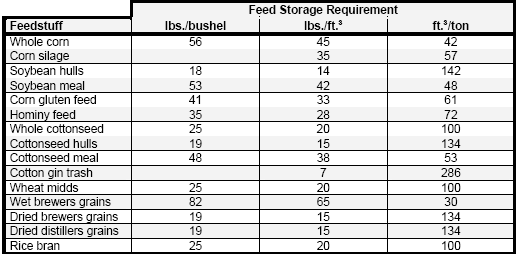



Alternative Feedstuffs for Beef Cattle Operations – Part I
By Jane Parish, Extension Beef Cattle Specialist, Mississippi State University - Dry conditions across the Mississippi this year have made making economical and effective nutritional program decisions even more critical going into the fall. Beef cattle feeding programs can successful include a wide variety of feedstuffs. Basic comparisons and information about many of these feed ingredients are outlined in this article and the Beef Production Strategies article.Nutritional and Economic Replacement Values of Feedstuffs
Just because certain by-products are cheap in terms of dollars, does not mean that they are necessarily a good value. The nutritional makeup of feeds and what they will contribute to beef cattle performance determine their true value. Some feeds can be fed free-choice in self feeders, while others required daily hand feeding. Because each feed has its own unique feeding advantages and limitations, it is worth the time to visit with someone who is competent in formulating beef cattle diets to avoid any potential nutritional problems or disorders in the herd.
The relative value of feeds can be compared in terms of dollar value for total digestible nutrients and crude protein content as compared to whole shelled corn and soybean meal base feeds. Table 1 shows prices at which selected by-product feeds would be relatively equivalent to corn and soybean meal at the given prices. Being able to purchase by-product feeds for less than these relative values would be good deals compared to feeding corn and soybean meal base diets at the given prices. This does not account for roughage levels needed in the diet or other feeding considerations but can be useful in quick overall comparisons of feed rices and nutrient replacement values.
Table 1. Relative Value of Bi-Product Feeds with Selected Corn and Soy Bean Meal Prices

Top values are estimated based on soybean meal costing $150/ton. Bottom values are estimated based on soybean meal costing $200/ton.
Feed Storage and Handling Considerations
Farm feed storage (Table 2), mixing, handling, and feeding capabilities also determine the feasibility of using different ingredients and diets for the herd. Specific feeds can have characteristics that require special handling considerations, as in the case of the flowability limitations associated with fuzzy whole cottonseed. Sacking feeds is useful for feeding and storage in many cases but typically costs extra.
Table 2. Feed Storage Requirements for Selected Beef Cattle Feedstuffs

Corn Products
CornCorn is typically considered the gold standard energy feed for beef cattle and is heavily used in beef cattle diets including finishing diets.
- Extremely high energy feed
- Quite palatable to cattle
- Contains low calcium, high phosphorus levels like most feed grains
Corn gluten feed is a by-product of the corn milling process which produces high-fructose corn syrup used as a sweetener. It consists primarily of the bran and meal remains from the grain after starch removal.
- Good protein content but protein quality too low for poultry and swine diets
- Works as a protein and energy supplement
- TDN value about equal to corn as a supplement at 0.5% of body weight or less on high-forage diets
- Often prices in as a cost-effective feed ingredient
- Should not make up more than 50% of daily dry matter intake
- Can be fed in self-feeders along with hay or pasture, but caking possible in humid conditions
- Excessive heating during processing lowers feed value and palatability and darkens color
- Wet form use only practical in areas relatively close to mills
- Low in calcium
- Can contain high sulfur levels that necessitates mixing with other feeds in the diet
Hominy feed is made up of the corn bran, germ, and part of the starchy portion of the corn
kernel from degermed corn meal production,
- Roughly equal to ground corn in feeding value
- Very palatable to cattle
- Higher protein levels than corn grains
- Fat content normally 6% or more
- Low fat form has less energy
- Finely ground product suitable for mixing with other feeds
- Can be stored, handled, and fed similarly to ground corn
- Best to use up supplies in one month or less to avoid stale smell
Distillers grain is a by-product from the fermentation of grain to produce alcohol (e.g., ethanol). p>
- Availability generally limited to areas near distilleries and ethanol plants
- Excellent source of protein and energy
- Can be fed as a majority of the total diet
- Drying facilitates storage, transportation, and handling
Soybean Products
Soybean Hulls
Soybean hulls are a by-product of the soybean oil milling process.
- Very palatable and digestible feed
- TDN value varies depends on amount fed and type of diet
- Roughly equal to corn as a supplement at 0.5% of body weight or less on highforage diets
- Decent protein source but can vary widely from load to load
- High fiber content not effective fiber, adequate roughage source also needed
- Can be fed in self-feeders along with hay or pasture
- Conducive to bloat when fed at high levels (over 7 lbs. per day)
- Bulky, dusty, best when pelleted or mixed with silage or molasses to reduce dust
- Good source of calcium but low in phosphorus
- Widely used ingredient in Mississippi beef cattle diets
Soybean meal is another by-product of the soybean oil milling process.
- Excellent protein source
September 2006


